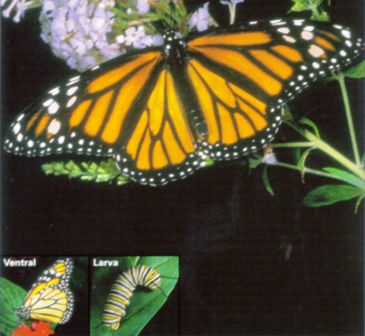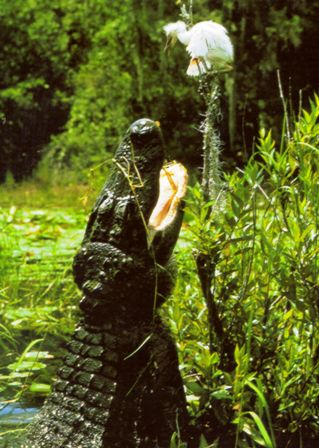Firebush...the name says it all! This tropical shrub is known for two attributes. First, the plant shows colors that would make any blaze proud. And second, it's the only plant that I know which actually performs better the closer it gets to spontaneous combustion! Firebush is a showy, fast-growing, semi-woody evergreen shrub that can get up to 15 feet tall under ideal conditions, but usually stays much smaller. It has whorled leaves, usually with three but occasionally as many as seven at each node. The firebush hails from South Florida, the West Indies, and Central and South America. In its native habitat, Firebush is known more for its herbal properties than for its ornamental value. Throughout the year, firebush produces showy terminal clusters (cymes) of bright reddish-orange or scarlet tubular flowers. Firebush is a valuable addition to butterfly and hummingbird gardens, and in south Florida is often planted in wildlife gardens with other native shrubs such as American beautyberry, coral bean and wild coffee. Firebush is salt tolerant and will grow in any kind of soil as long as it is well drained.
Common lantana is a rugged evergreen shrub from the tropics. The species will grow to 6 feet high and may spread to 8 feet in width with some varieties able to clamber vine-like up supports to greater heights. The leaves are 2-5 inches long by 1-2 inches wide with rounded tooth edges and a textured surface. Stems and leaves are covered with rough hairs and emit an unpleasant aroma when crushed. The small flowers are held in clusters, called umbels that are typically 1-2 inches across. In the tropics lantana is a non-stop bloomer. Where it is killed to the ground by frost the lantana blooms in summer and fall. Flower color ranges from white to yellow, orange to red, pink to rose in unlimited combinations, in addition the flowers usually change in color as they age. A lantana may look orange from a distance but the flowerhead is examined at close range it consists of individual white, yellow and red flowers that blend when viewed from afar. Lantana is a favorite species for butterflies and non-invasive lantanas should be a part of any butterfly garden.
Spanish Needles seems to be a favorite nectar plant for lots of butterflies in South Florida. This native plant is a summer annual about 2-5 feet tall. The Spanish Needles plant is more or less erect and branches occasionally. The stems are green or reddish green, angular, strongly veined, and hairless. The leaves are mostly opposite; their blades are up to 8 inches long and 4 inches across, while their petioles are up to 2 inches long. The upper stems terminate in individual flowerheads on long peduncles. Each flowerhead is about ½ inch long and ¼ inch across. Spanish Needles have numerous disk florets in their center. The disk florets have corollas that are golden yellow and tubular in shape. The yellow ray florets are petal-like and are about 1/8 inch long and oval to oblong in shape. Some flowerheads may lack petal-like extensions of the ray florets altogether. The base of the flowerhead is surrounded by green bracts. The blooming period occurs during the late summer or early fall.
Resembling the annual garden petunias, wild petunia, sometimes called Mexican petunias, produces a single five lobed, trumpet-shaped flower, that is1-2 inches long and wide, and emerging where each leaf joins the stem. Although it superficially resembles a garden petunia, which is in the potato family, wild petunia is a member of the Acanthus family, to which the cultivated “shrimp plant” and “Black-Eyed-Susan” also belong. The flowers of wild petunia vary in color from pale lavender to medium bluish-purple. On some plants the stems and the paired, egg-shaped leaves are hairy. The plant grows 1-2 feet tall, although a little scraggly. Blooming June through September, the blossoms last only a day or two, but new flowers form in succession. The plant self-seeds, and new shoots can be seen throughout the garden from a single planting. Wild Petunias are easily transplanted. Germination from seeds is low, but summer stem cuttings will root well. This plant was named for an early French herbalist Jean Ruella.






